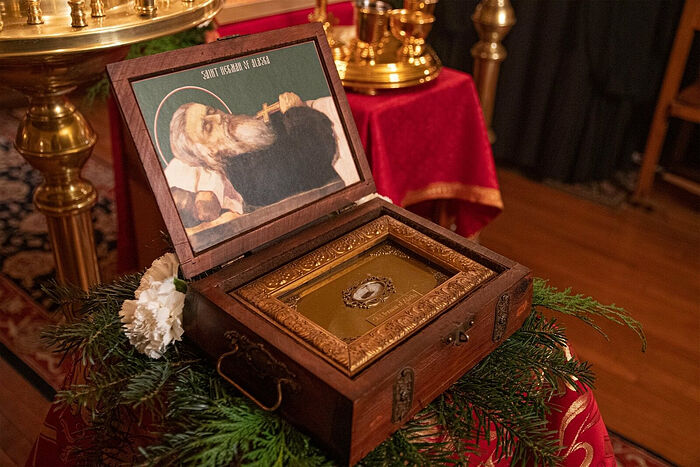
Today we celebrate the memory of the Venerable 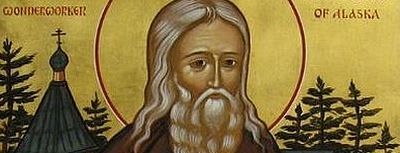 St. Herman of Alaska
St. Herman of Alaska
“>Herman of Alaska, the patron saint of North America. There is so much that is praiseworthy in the life of this man of God that one hardly knows where to begin. He was an ascetic who dwelt as an anchorite in the forests from the time of his early childhood. He was a zealous missionary who, like the righteous Abraham, left his home and his fatherland for the sake of the Kingdom of Heaven, not for himself only but for all of us who have received the precious gift of Orthodoxy on this continent. Though a hermit and a lover of solitude, he nevertheless joyfully took care of his orphans and fearlessly defended the native Aleuts from exploitation by his own people. He was a monk who, out of his deep humility, refused ordination to the priesthood, and so was sent an angel from heaven on the day of the Lord’s 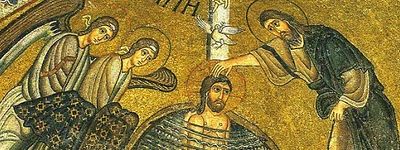 Theophany “>Theophany to bless holy water for him. He was a man who lived so wholly in the Kingdom of Heaven even during this earthly life that, when asked whether he ever grew lonely living by himself in his island hermitage, he could not even comprehend how such a thing could be possible, surrounded as he was by such a countless host of angels.
Theophany “>Theophany to bless holy water for him. He was a man who lived so wholly in the Kingdom of Heaven even during this earthly life that, when asked whether he ever grew lonely living by himself in his island hermitage, he could not even comprehend how such a thing could be possible, surrounded as he was by such a countless host of angels.
Alas, how far removed are our own lives from everything that has just been spoken concerning this saint! After standing in church and gazing at the holy icon and relic of this chosen vessel of the Holy Spirit, when we then turn our gaze inward toward our own hearts, we see there all too clearly our vanity, our all-consuming self-love, our petty weakness, our sinful depravity, our spiritual emptiness. Here before us there shines radiantly a living example of what it means to truly be a Christian, and the light of that truth reveals all too clearly the darkness in which we instead so often choose to walk.
When we begin to understand, even a little, how far short we fall from what we are meant to be, from what the grace of Christ has given us the power to be, we are forced to ask ourselves why. What is it that prevents us from acquiring this grace, from truly changing our sinful lives? All of us standing here, simply by virtue of the fact that we are standing here, have tried at least a little to leave the things of this earth behind; all of us standing here have, to one extent or another, failed.
Perhaps this might cause us to doubt the power or the love of God, or perhaps we might simply resolve to force ourselves to try harder going forward. Yet St. Herman is living proof of the power of the grace and the love of God, and the experience of our own lives has without doubt already shown us the futility of our own striving, no matter how fervent or well-intentioned it may be. Why, then, do we still fail?
Let us not underestimate the importance of this question. Indeed, in facing this question a Christian is threatened by the greatest of all possible spiritual dangers, for behind it stand the twin threats of apostasy on the one hand, and despair on the other. And there are surely no more certain roads to perdition than these.
Yet just as the life of St. Herman confronts us with this question, so too does it reveal to us the answer. Simeon Yanovsky, one of the colonial administrators in Alaska who knew St. Herman, tells the following story about the saint. It is a famous story, and rightly so, for it contains a great truth:
Once the Elder was invited aboard a frigate which came from St. Petersburg. The Captain of the frigate was a highly educated man, who had been sent to America by order of the Emperor to make an inspection of all the colonies. There were more than twenty-five officers with the Captain, and they also were educated men. In the company of this group sat a monk of a hermitage, small in stature and wearing very old clothes…
Father Herman gave them all one general question: ‘Gentlemen, What do you love above all, and what will each of you wish for your happiness?’ Various answers were offered … Some desired wealth, others glory, some a beautiful wife, and still others a beautiful ship he would captain; and so forth in the same vein. ‘Is it not true,’ Father Herman said to them concerning this, ‘that all your various wishes can bring us to one conclusion – that each of you desires that which in his own understanding he considers the best, and which is most worthy of his love?’ They all answered, ‘Yes, that is so!’
And here St. Herman reveals to us the root of our obstinancy in sin. It is, as it turns out, almost painfully simple: we spend our lives seeking after whatever it is that we love. And as long as we love our own pleasure or power or praise, or anything else of ourselves or of this world, it will remain absolutely impossible for our lives to change. No matter how much we might try to force ourselves, it remains inevitable that – as our Lord said – “A good man out of the good treasure of his heart bringeth forth that which is good; and an evil man out of the evil treasure of his heart bringeth forth that which is evil” (Luke 6:45). We cannot simply choose to stop sinning; instead, we must choose to stop loving all the many things that cause us to sin. We must renounce all the inner hungers, the deep and hidden desires, that draw us away from God.
How can this happen? How can the human heart learn turn away from earthly lusts and begin instead to truly love our Lord Jesus Christ? Well, there is one way which is really quite simple: by keeping Him always before the eyes of our heart. By walking always before the face of God. The divine beauty of Christ has the power to break even the hardest of hearts, and to break the spell of even the most seductive of earthly loves. As St. Isaac the Syrian says, we will never be able to overcome the love of this world and its pleasures unless we set before the eyes of our soul the beauty of the age to come. And this indeed is what repentance — metanoia — truly means: not a feeling of guilt or even godly sorrow, but the turning of our heart towards God.
So many of the spiritual tools and disciplines and practices which we have been given as Orthodox Christians are in fact designed precisely in order to allow us to catch even if but a glimpse of divine beauty. This is why we fast, this is why we pray, this is why come as often as possible into the temple of God or stand before the holy icons at home: so that we might create at least a few small opportunities in our lives for us to stop all of our endless consumption and care and distraction, and learn finally and at long last to simply pay attention to God. And if we only do this, then He Himself will take care of all the rest.
This is also why the Holy Scriptures and the holy monastic fathers tell us that the  On the Remembrance of Death: the Sixth Step of the Ladder of Divine AscentThe sixth step of St. John Climacus’s The Ladder of Divine Ascent is dedicated to the spiritual discipline of the remembrance of death, which is to have in mind the hour of one’s repose and the following judgment before God, in order to deter oneself from sin. St. John tells us that the remembrance of death is the highest work for one who is spiritually minded (6:4), and that “He who has mounted [this sixth step] will never sin again” (6:24).
On the Remembrance of Death: the Sixth Step of the Ladder of Divine AscentThe sixth step of St. John Climacus’s The Ladder of Divine Ascent is dedicated to the spiritual discipline of the remembrance of death, which is to have in mind the hour of one’s repose and the following judgment before God, in order to deter oneself from sin. St. John tells us that the remembrance of death is the highest work for one who is spiritually minded (6:4), and that “He who has mounted [this sixth step] will never sin again” (6:24).
“>remembrance of death is enough to overcome every sin. More than anything else, the remembrance of our death reveals to us the treacherous deceit of the swiftly passing pleasures of this world on the one hand, and the eternal and unfading beauty of the Kingdom of Heaven on the other.
Of course, none of this is easy. Perhaps the most profound line 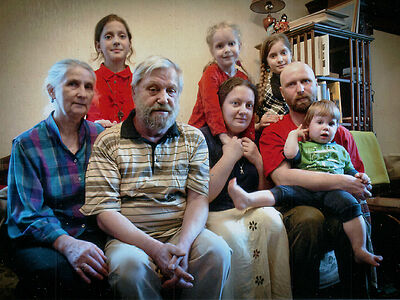 “The Dostoyevsky line continues”We have the same genes and we pass down from generation to generation the memory of Feodor Mikhailovich as we inherited nothing else but the genes.
“The Dostoyevsky line continues”We have the same genes and we pass down from generation to generation the memory of Feodor Mikhailovich as we inherited nothing else but the genes.
“>Dostoevsky ever wrote is: “The terrible thing is that beauty is not only fearful but also mysterious. Here the devil is struggling with God, and the battlefield is the human heart.” For most of us, this struggle will last a lifetime. Our hearts are hardened and slow to change. But nevertheless let each of us patiently remind ourselves again and again of these truths, and so over time learn with God’s help to see through the tired lies of our old sinful pleasures. Let us as often as possible, and with all the love that we can find within our hearts, set before ourselves the holy things of God: the divine Scriptures, the holy icons, the hymns of the Church, the writings of the Holy Fathers, the lives of the saints. Let us also not forget to set before ourselves our own brothers and sisters around us in whom Christ mystically dwells, and let us open our hearts to be moved and inspired by their living examples of love and self-sacrifice. And above all let us constantly, with reverent awe and humble gratitude, remember our Savior Himself, the love with which He has loved us, and the grace and mercy and providential care which He always and unfailingly bestows upon us despite our innumerable weaknesses and failings and falls into sin.
If we are faithful in these things, then without any doubt the grace which so brilliantly illumines St. Herman will also illumine our own hearts. And in the light of that grace we will see not only the depths of our sinfulness, but also the glorious and inexpressible heights of the beauty of Christ and the eternal riches that await those who love Him in the Kingdom of His Father. Therefore, in the words of St. Herman himself: “From this day, from this hour, from this minute, let us strive to love God above all and fulfill His holy will.”
Through the prayers of our venerable and God-bearing father Herman the Wonderworker of Alaska, O Lord Jesus Christ our God, have mercy on us. Amen.

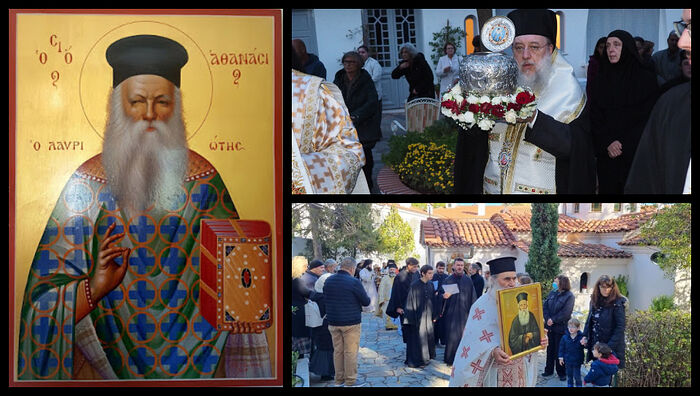
 Constantinople canonizes two 20th-century eldersThe Holy Synod of the Patriarchate of Constantinople resolved to canonize two 20th-century elders today.
Constantinople canonizes two 20th-century eldersThe Holy Synod of the Patriarchate of Constantinople resolved to canonize two 20th-century elders today.

 St. Herman of Alaska
St. Herman of Alaska Theophany “>Theophany to bless holy water for him. He was a man who lived so wholly in the Kingdom of Heaven even during this earthly life that, when asked whether he ever grew lonely living by himself in his island hermitage, he could not even comprehend how such a thing could be possible, surrounded as he was by such a countless host of angels.
Theophany “>Theophany to bless holy water for him. He was a man who lived so wholly in the Kingdom of Heaven even during this earthly life that, when asked whether he ever grew lonely living by himself in his island hermitage, he could not even comprehend how such a thing could be possible, surrounded as he was by such a countless host of angels.  On the Remembrance of Death: the Sixth Step of the Ladder of Divine AscentThe sixth step of St. John Climacus’s The Ladder of Divine Ascent is dedicated to the spiritual discipline of the remembrance of death, which is to have in mind the hour of one’s repose and the following judgment before God, in order to deter oneself from sin. St. John tells us that the remembrance of death is the highest work for one who is spiritually minded (6:4), and that “He who has mounted [this sixth step] will never sin again” (6:24).
On the Remembrance of Death: the Sixth Step of the Ladder of Divine AscentThe sixth step of St. John Climacus’s The Ladder of Divine Ascent is dedicated to the spiritual discipline of the remembrance of death, which is to have in mind the hour of one’s repose and the following judgment before God, in order to deter oneself from sin. St. John tells us that the remembrance of death is the highest work for one who is spiritually minded (6:4), and that “He who has mounted [this sixth step] will never sin again” (6:24). “The Dostoyevsky line continues”We have the same genes and we pass down from generation to generation the memory of Feodor Mikhailovich as we inherited nothing else but the genes.
“The Dostoyevsky line continues”We have the same genes and we pass down from generation to generation the memory of Feodor Mikhailovich as we inherited nothing else but the genes.

 Ukrainian Parliament votes for bill to ban UOC in first reading, second reading still to comeMany local administrations have declared bans on the Church, though at the same time, the Church’s activities have continued in those localities.
Ukrainian Parliament votes for bill to ban UOC in first reading, second reading still to comeMany local administrations have declared bans on the Church, though at the same time, the Church’s activities have continued in those localities.